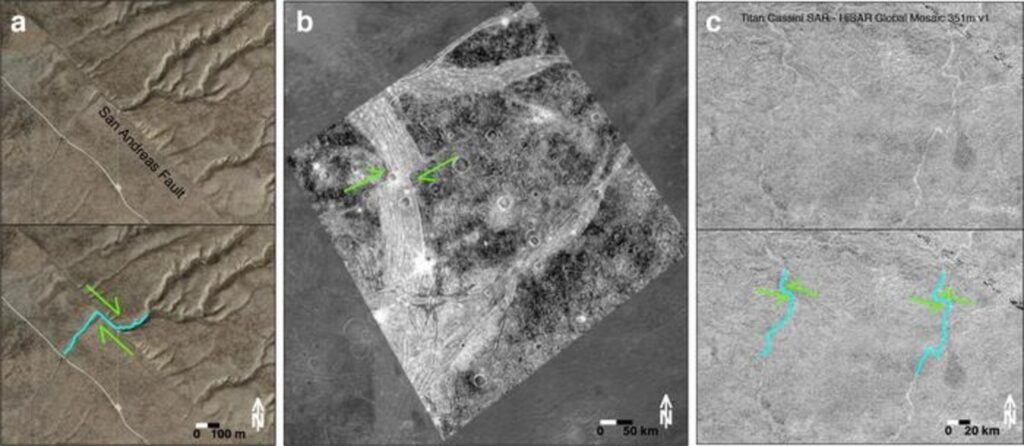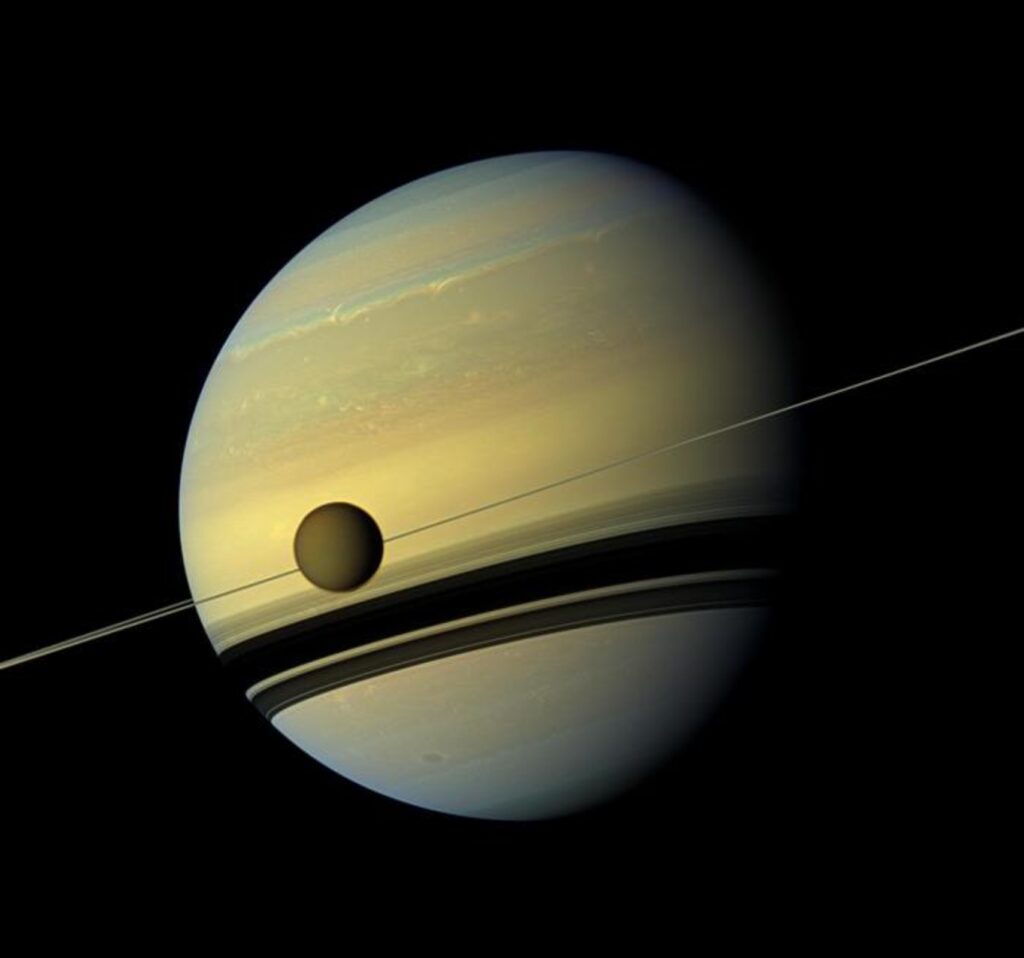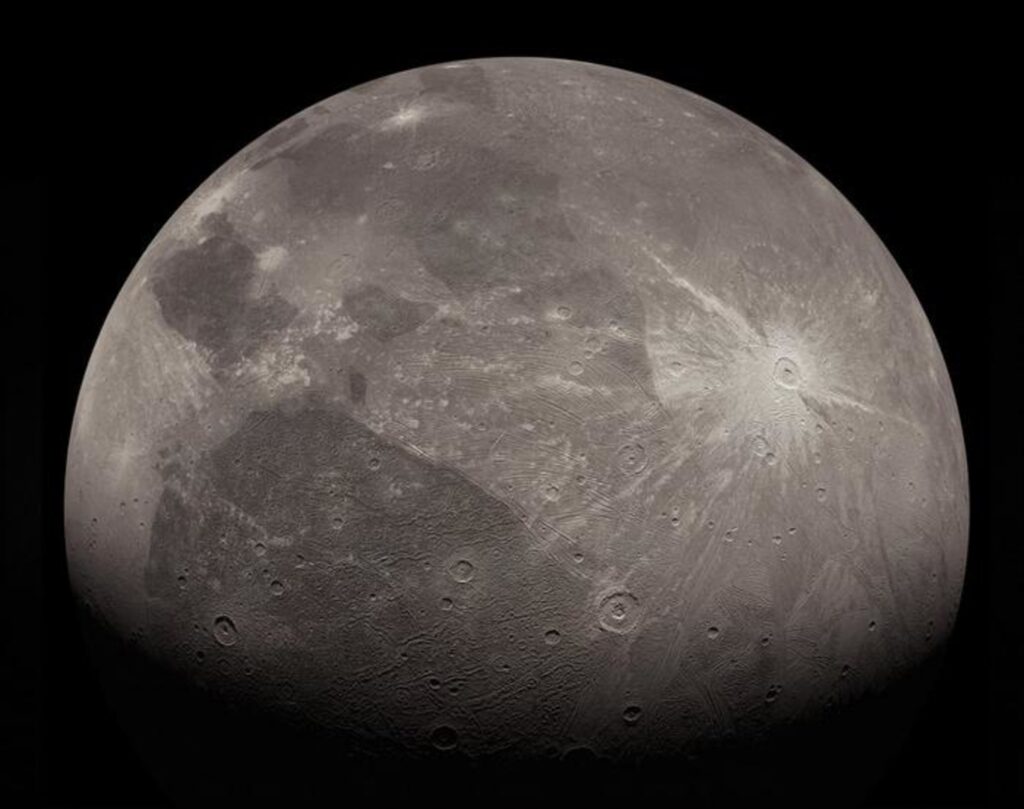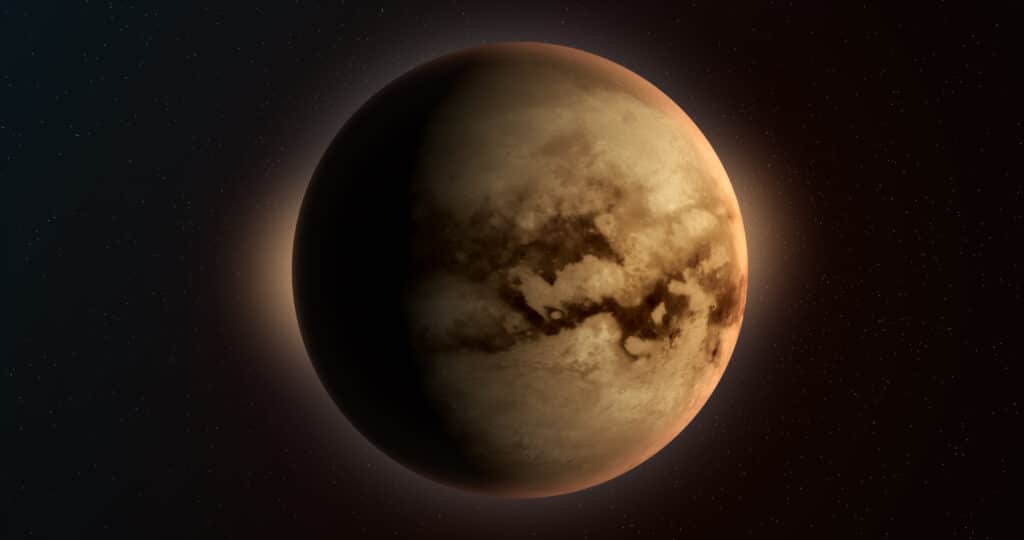Could humans one day end up inhabiting icy moons in our solar system? Scientists from the University of Hawai‘i at Mānoa are shedding new light on the fascinating geological processes occurring on two of our solar system’s icy moons: Titan, the largest moon of Saturn, and Ganymede, Jupiter’s largest moon.
In two recently published studies, researchers have uncovered the mechanisms behind strike-slip faults on these distant celestial bodies, providing insights into their potential habitability and the possibility of life beyond Earth.
“We are interested in studying shear deformation on icy moons because that type of faulting can facilitate the exchange of surface and subsurface materials through shear heating processes, potentially creating environments conducive for the emergence of life,” says study lead author Liliane Burkhard, research affiliate at the Hawai‘i Institute of Geophysics and Planetology in the UH Mānoa School of Ocean and Earth Science and Technology, in a university release.

The investigations revolve around the phenomenon of tidal flexing, which occurs when an icy moon orbits its parent planet. The gravitational forces exerted by the planet cause the moon’s surface to undergo stress, leading to geologic activities like strike-slip faulting. This phenomenon varies as the moon’s distance from its host planet changes due to its elliptical orbit.
Titan: A Frozen Ocean World with Potential for Life
Titan, often referred to as a “frozen ocean world,” boasts extremely cold surface temperatures that turn water ice into a rock-like material capable of cracking and faulting. Beneath its frozen exterior, evidence from the Cassini spacecraft suggests the presence of a liquid water ocean. What sets Titan apart from other moons in our solar system is its dense atmosphere, supporting an Earth-like hydrological cycle with methane clouds, rainfall, and flowing liquids on the surface, potentially making it a habitat for life.
An upcoming NASA mission called Dragonfly, set to launch in 2027, aims to explore Titan and search for the building blocks and signs of life. The mission’s novel rotorcraft lander will conduct flights on the moon’s surface, investigating various locations.

In their study of the Selk crater area on Titan, designated as the initial landing site for Dragonfly, Burkhard and her team analyzed the potential for shear deformations and strike-slip faulting. They calculated the stress exerted on Titan’s surface due to tidal forces, concluding that the conditions in the Selk crater area made it improbable for strike-slip faulting.
“While our prior research indicated that certain areas on Titan might currently undergo deformation due to tidal stresses, the Selk crater area would need to host very high pore fluid pressures and a low crustal coefficient of friction for shear failure, which seems improbable,” explains Burkhard. “Consequently, it’s safe to infer that Dragonfly won’t be landing in a strike-slip ditch!”
Ganymede: A Moon with a Mysterious Past
Ganymede, Jupiter’s largest moon, has also been the subject of Burkhard’s research. The scientists investigated the Nippur/Philus Sulci region, where documented strike-slip faults are present. However, unlike Titan, Ganymede’s current orbit is too circular to cause tidal stress deformation.
Their findings revealed a complex geological history on Ganymede, with multiple crosscutting bands of light terrain showing varying degrees of tectonic deformation. Researchers identified three distinct eras of geologic activity: ancient, intermediate, and youngest.

“I investigated strike-slip faulting features in intermediate-aged terrain, and they correspond in slip direction to the predictions from modeling stresses of a higher past eccentricity. Ganymede could have undergone a period where its orbit was much more elliptical than it is today,” notes Burkhard.
Younger geologic units in the same region did not exhibit the typical slip direction associated with first-order shear indicators, indicating that alternative processes might have shaped these features.
“This suggests that these features might have formed through another process and not necessarily due to higher tidal stresses,” adds Burkhard. “So, Ganymede has had a tidal ‘mid-life crisis’, but its youngest ‘crisis’ remains enigmatic.”
These studies, along with ongoing space exploration missions, contribute to our understanding of the solar system’s icy moons.
“Geologic investigations, such as these, prior to launch and arrival, inform and guide mission activities,” concludes Burkhard. “And missions such as Dragonfly, Europa Clipper and ESA’s JUICE will further constrain our modeling approach and can help pinpoint the most interesting locations for lander exploration and possibly for gaining access to the interior ocean of icy moons.”
The studies are published in the journal Icarus.












